Changes in Afghan Economy, Households and Cross Cutting Sectors
The report is an evidence-based assessment of the economic and social situation in Afghanistan, two years after the power shift in August 2021. The report shows that the Afghan economy and people are still in crisis, with high levels of multidimensional deprivation, low growth, and urgent humanitarian needs. The report also highlights the impact of the crisis on women and girls, who face severe restrictions on their rights and freedoms. The report calls for urgent action to address the humanitarian and basic needs of the Afghan people by stimulating economic recovery, revitalising the financial sector, and investing in community development and local economic resilience, including women’s economic enterprises. The report aims to inform and influence the policy discourse and decision-making on the future of Afghanistan, and to contribute to the efforts of building an increasingly stable, prosperous, and resilient nation.
Learn more
- Following a period of significant contraction since 2020, Afghanistan’s economy appears to be bottoming out, but may be mired in a period of low growth unless critical barriers to the recovery of the productive sectors are addressed and resolved. These barriers include the severely restricted operations of the banking sector (including microfinance institutions), trade disruptions, and institutional issues hindering service delivery, including to the private sector.
- International assistance since the regime change in August 2021 has saved millions of people from starvation and helped prevent a total economic collapse. This assistance must increasingly be complemented by investments in robust, private-sector led economic growth that supports livelihoods, creates jobs, and raises household incomes. This is the only path to sustainable development, poverty reduction, and community resilience.
- The de facto public institutions, particularly those in the economic sector, continue to lose the vital technical expertise they need to formulate policy and regulation, create an enabling environment for growth, and deliver essential services and support to key sectors such as agriculture, industry, and trade.
- The microfinance sector — a major source of financing for start-ups and micro, small, and medium enterprises including women-led businesses — remains crisis-hit, with no immediate signs of recovery. This sector, which is heavily reliant on donor grants, has contracted by over 60 percent in terms of its loan portfolio. The number of branches and share of female clients have also declined significantly. The sector is likely to further atrophy unless swift remedial steps are taken.
- Two years following the change in regime, seven out of ten Afghans are subsistence insecure—that is, they don’t have access to the most basic items such as utilities, cooking items, winter clothing, basic healthcare and coping strategies needed for mere subsistence. In addition to this, for two successive years, four out of five households were impacted by drought and/or economic shocks.
- The proportion of the population without access to basic necessities needed for subsistence-level living conditions reduced from 85 percent in 2022 to 69 percent in 2023, based on the Subsistence-Insecurity Index (SII) which is introduced by this report.
- Women are disproportionately affected by the socio-economic crises, in that their share of employment has nearly halved, decreasing from 11 percent in 2022 to 6 percent this year. On the opposite side, men’s share of employment increased 11 percent, suggesting a gender-based labour substitution. Compared to male-headed households, female-headed households consume a lower quantity of food and put in extra work for income similar to that earned by male-headed households.
- Overall, household living conditions have slightly improved this year, due largely to humanitarian assistance. Households report increased access to better shelter, heating devices and to electricity provided by the national grid. Despite a 76 percent increase in household monthly average real income compared to 2022, more than half of households still have subsistence needs greater than their incomes.
- The proportion of households that received humanitarian assistance nearly halved in 2023, although more than nine out of ten Afghans identified their highest priorities as food, livelihoods or healthcare. In the face of stagnating or declining humanitarian aid, economic recovery is even more vital to address the priority needs of the Afghan population.
- Continuing UN cash shipments, rebounding export growth, an appreciating Afghani currency and limited reconstruction spending by the de facto government are among the major drivers of economic stabilization, post the regime change in August 2021.
'Two Years in Review', in two minutes
Infographics
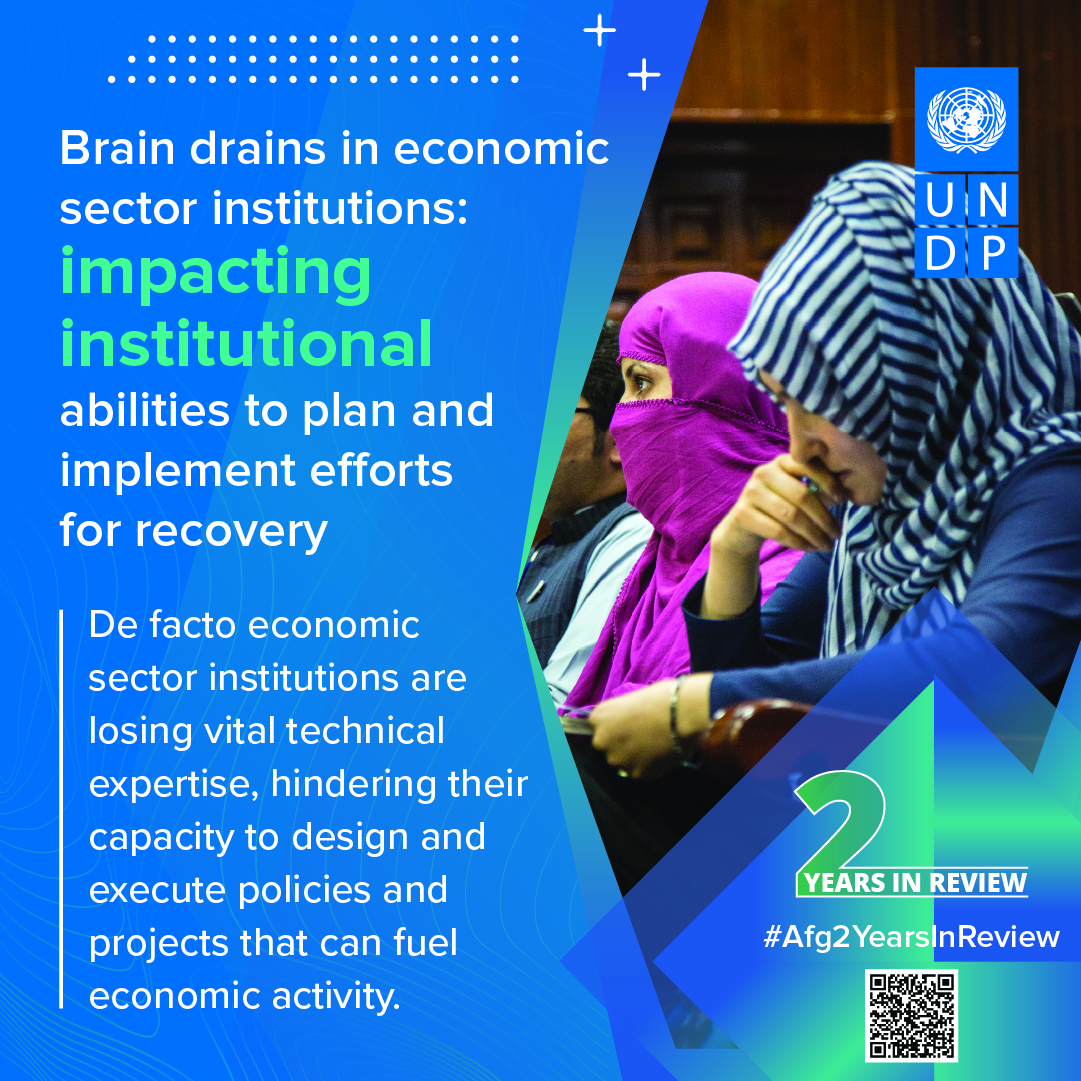
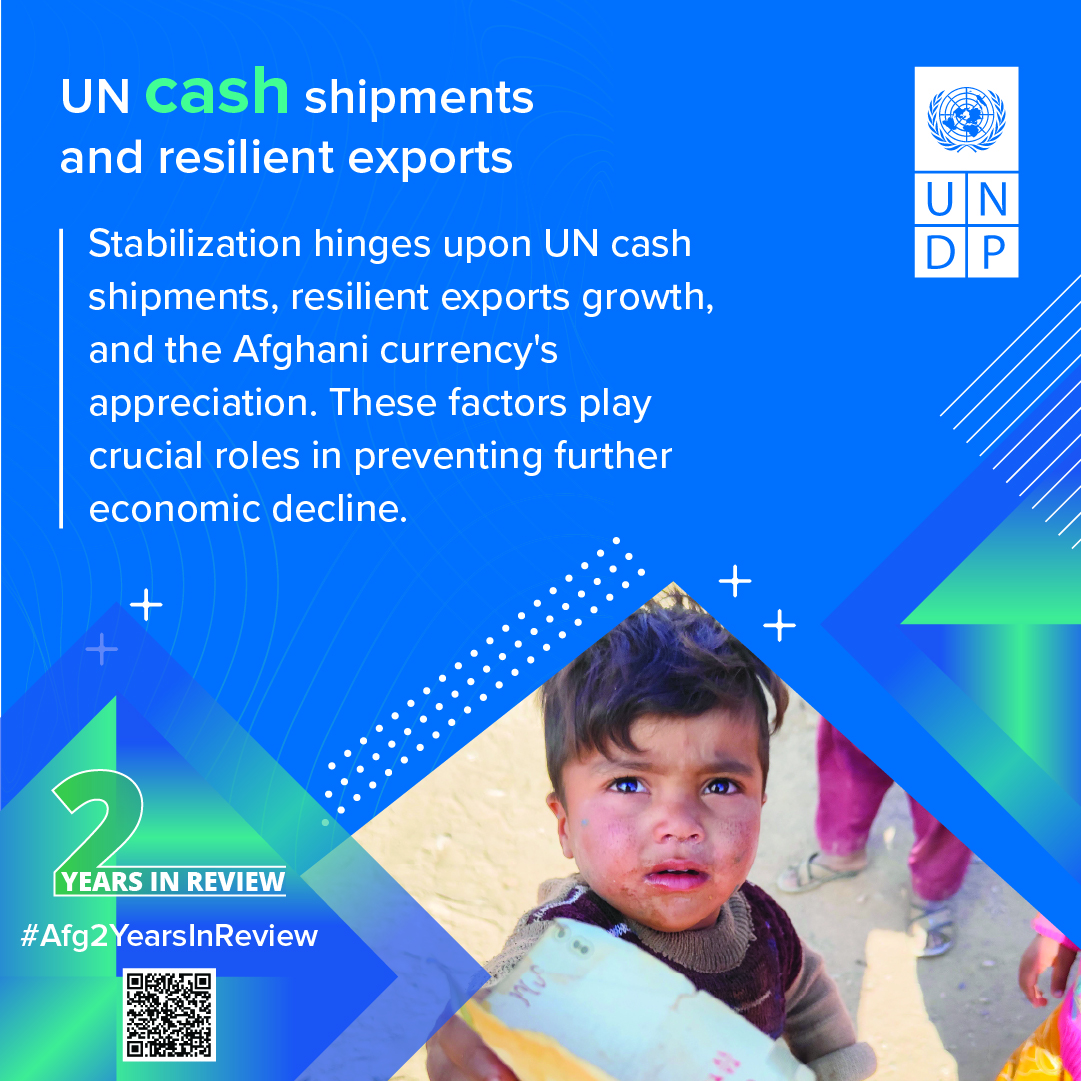
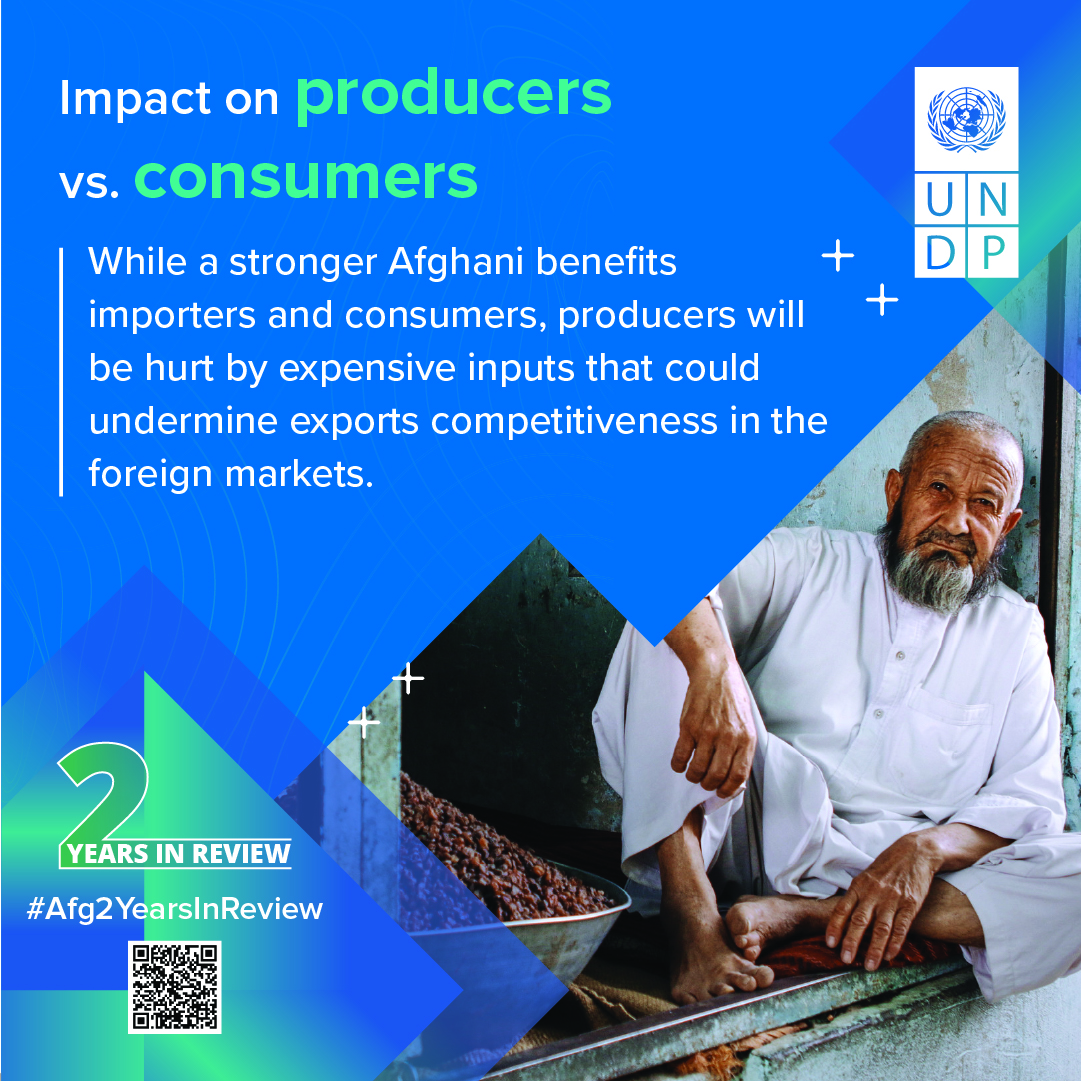
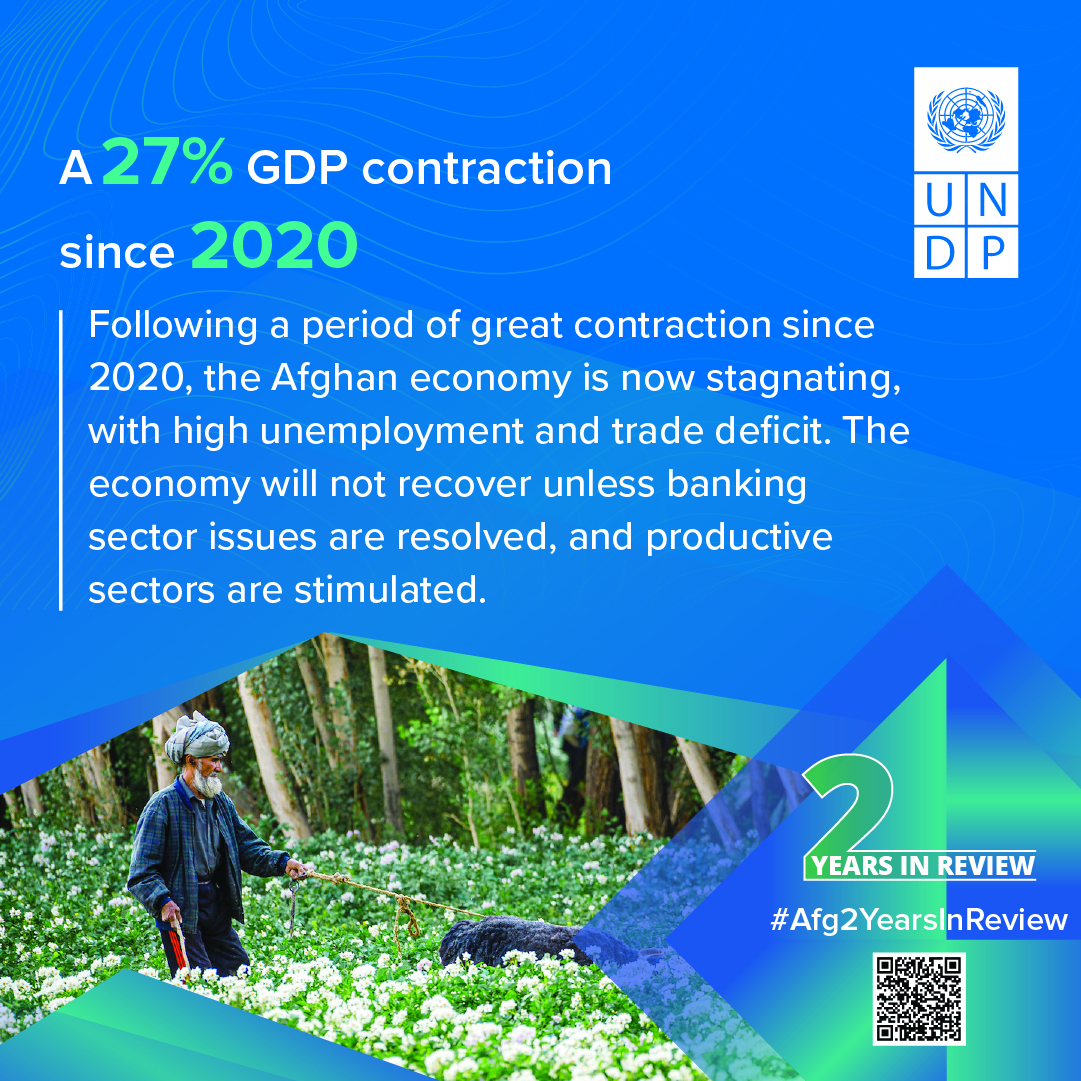
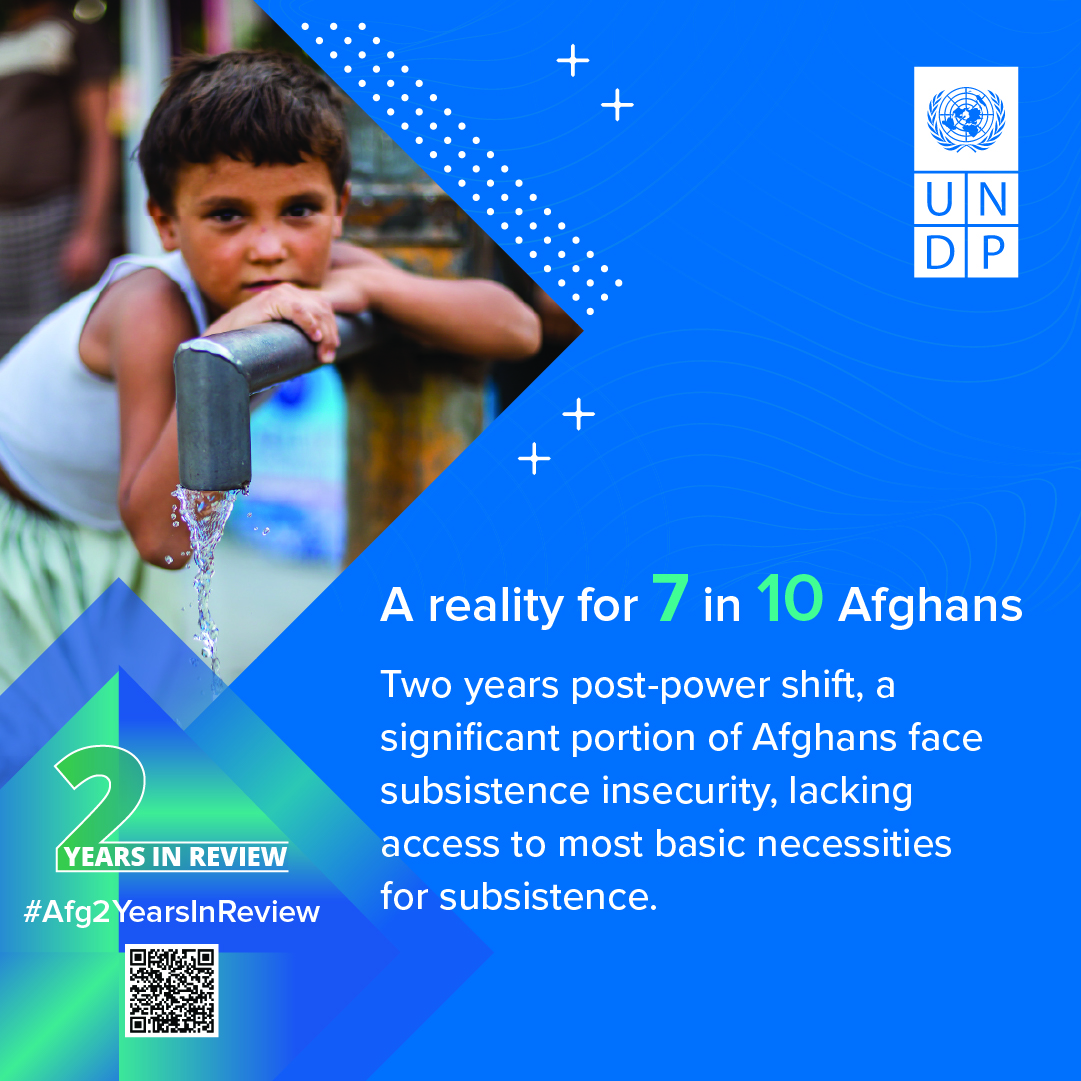
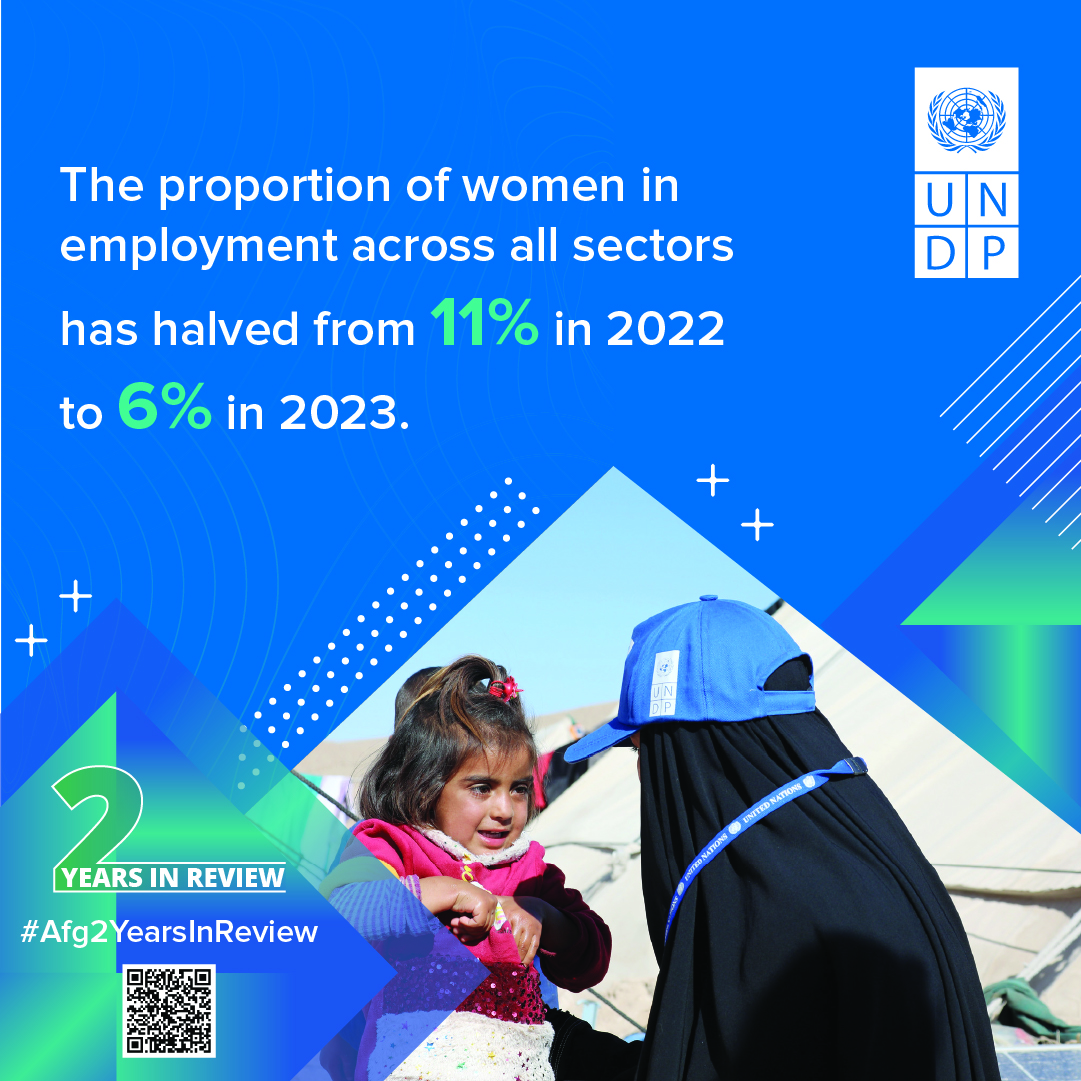
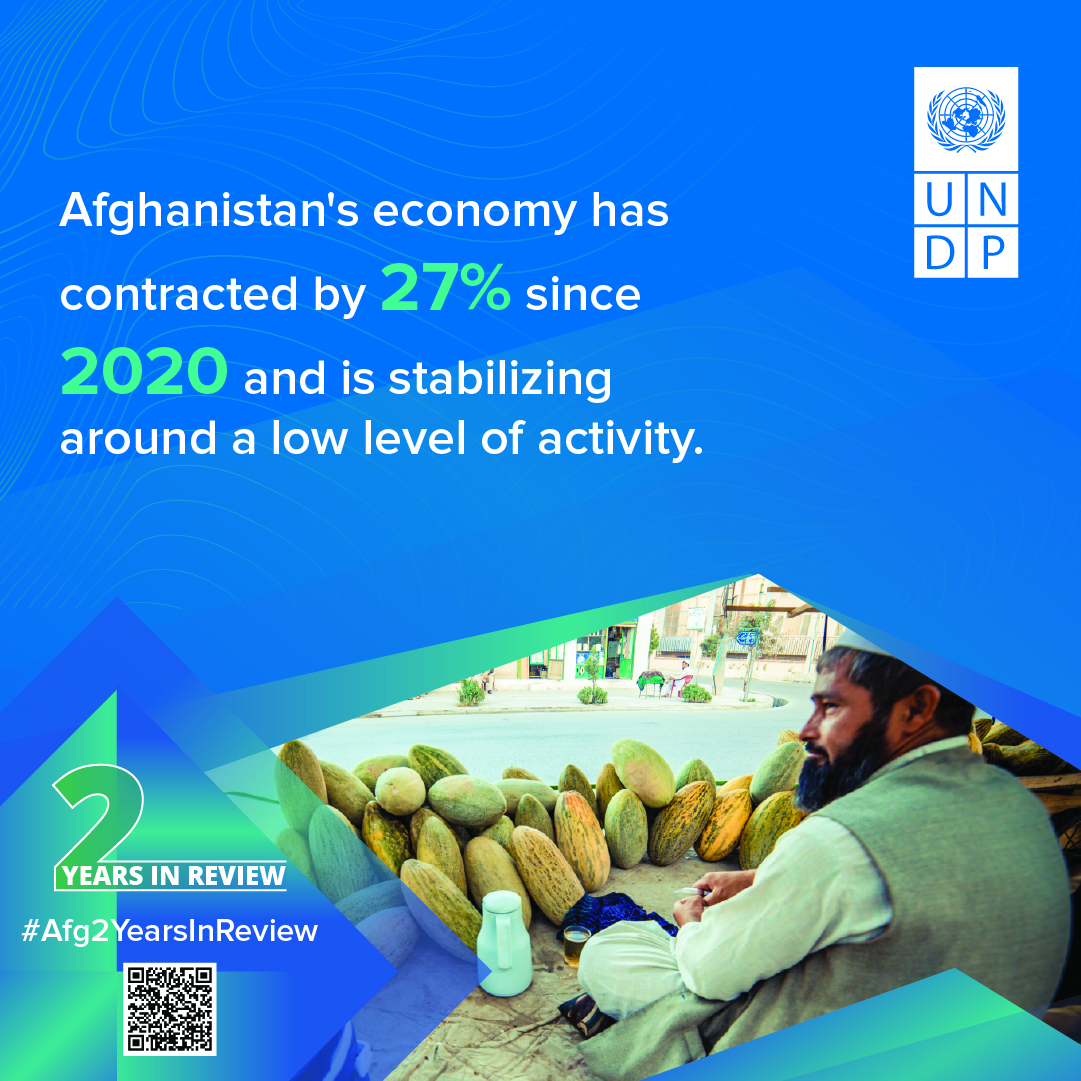
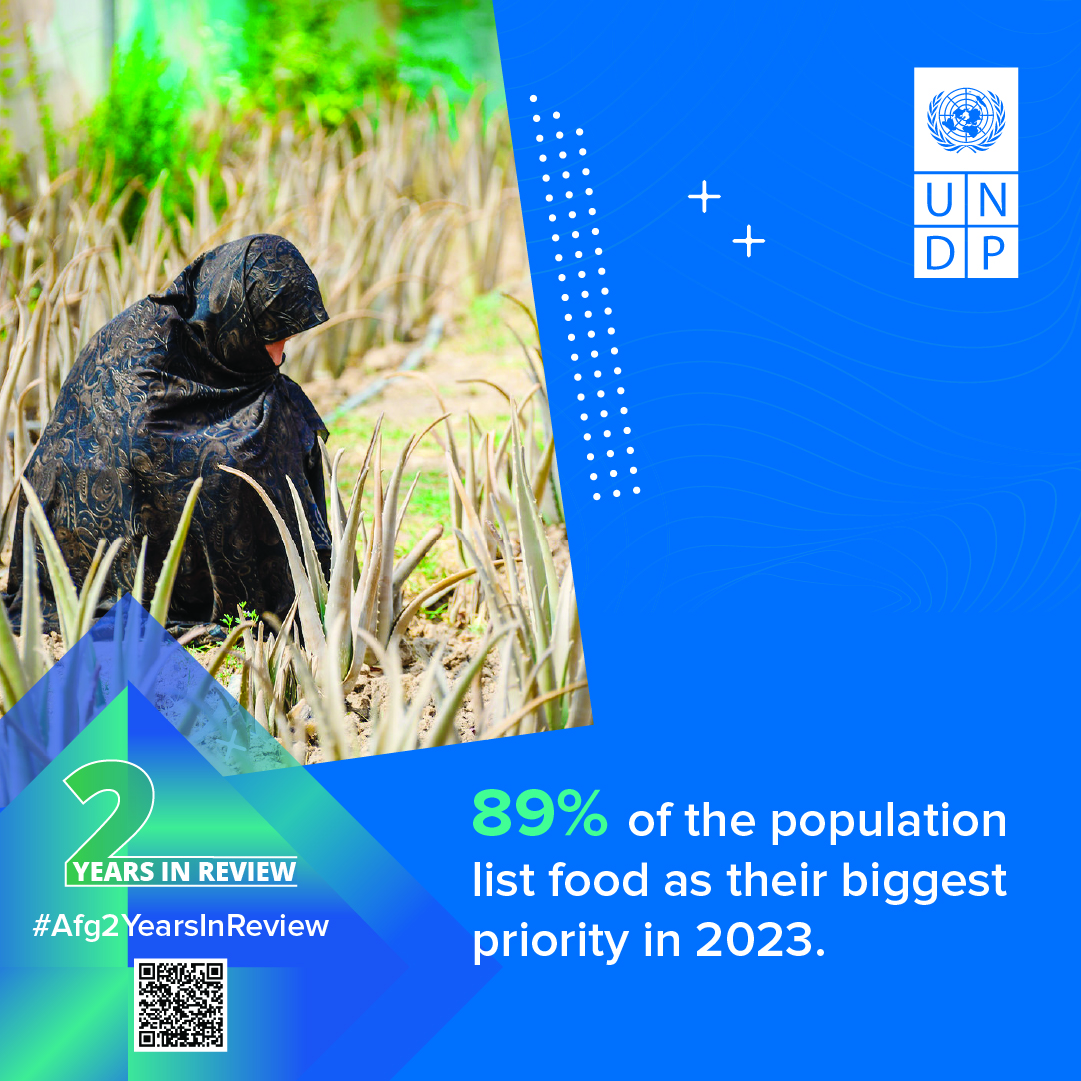
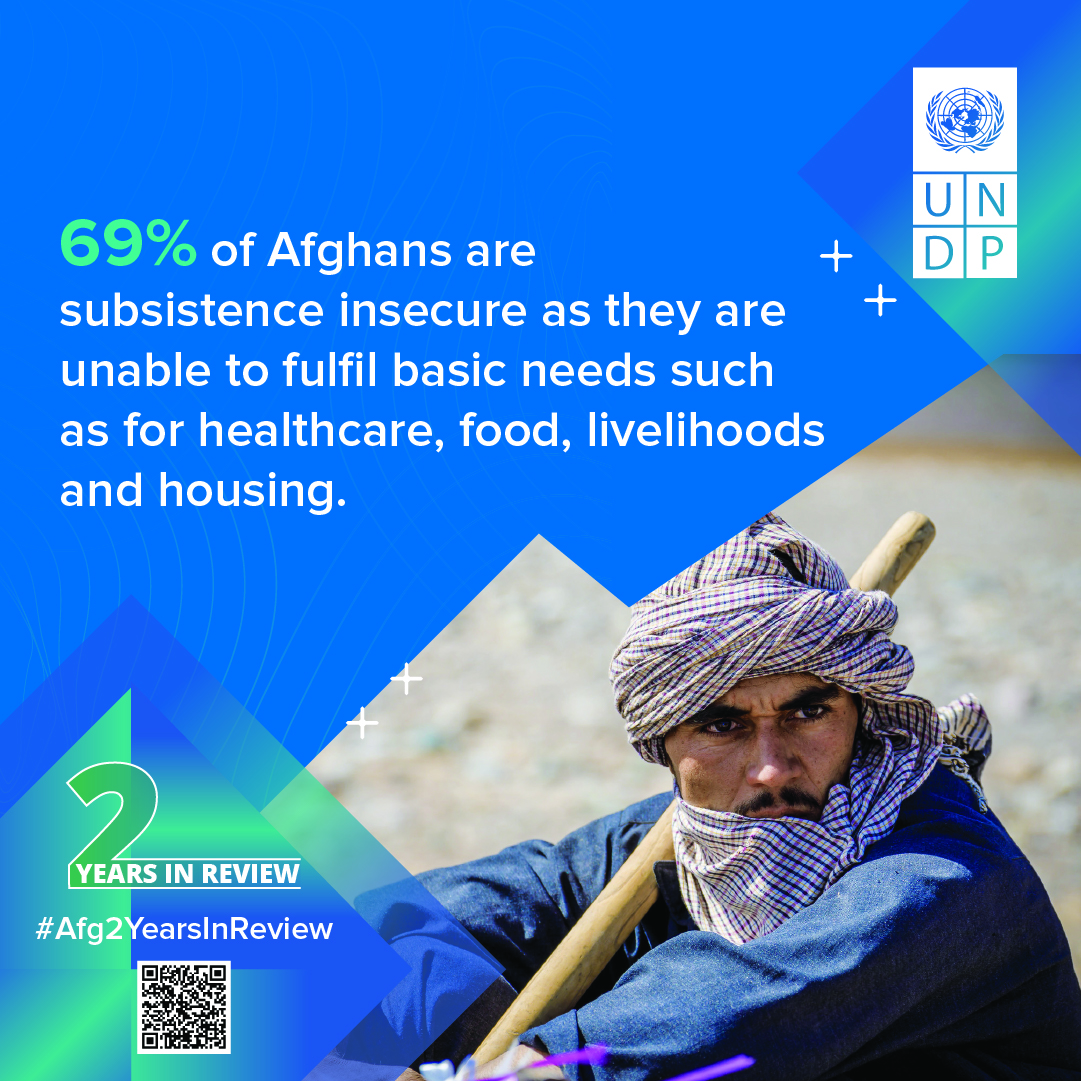

 Locations
Locations




